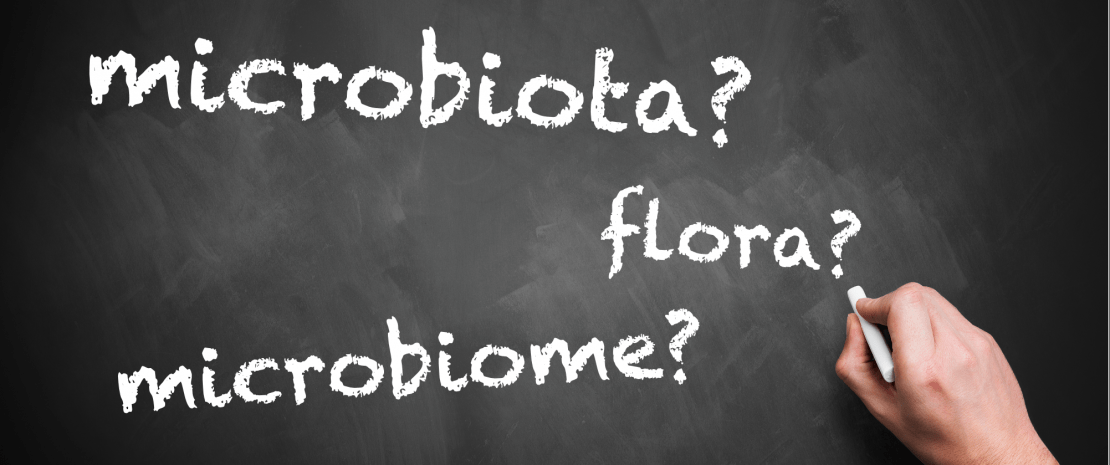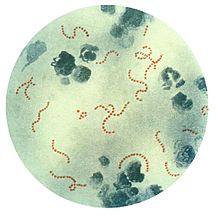장내미생물군
장내미생물군(gut microbiota, probiotics), 소화관, 소화관 미생물 또는 위장 미생물은 곤충을 비롯한 인간 및 다른 동물의 소화관에 사는 복잡한 미생물 군집이다. 내장 소화역학은 소화관 마이크로 비오타(microbiota)의 모든 게놈의 집합체이다. 위장(위와 창자)[1]은 인간의 미생물이 살고 있는 중요한 기관이다.[2]
개요[편집]
사람의 경우, 내장의 미생물무리(microbiota)는 신체의 다른 부위와 비교하여 가장 많은 수의 박테리아와 가장 많은 수의 종을 가지고 있다고 알려져 있다. 인간에서는 출생 후 1 ~ 2년 후에 창자 생물군이 형성되며, 그때까지 창자 상피와 창자 점막 장벽이 공동으로 개발하여 장 세균군상에 관여하고 심지어는 어떤 측면에서는 지지 작용을 한다. 장의 박테리아는 외부에서 들어온 병원균에 대한 방어막 기능인 건강한 장벽을 제공할 수 있다.
상세 기능[편집]
일부 소화관과 인간 사이의 관계는 단지 공생 (비 유해한 공존)이 아니라 오히려 상호적인 관계이다. 일부 인간 내장 미생물은 식이 섬유를 짧은 사슬 지방산 (SCFA), 예를 들어 아세트산 및 부티르산을 포함하며, 이들은 장박테리아에 의해서 숙주에 의해 흡수가 용이한 상태로 바뀐다. 장내 박테리아는 또한 비타민 B와 비타민 K의 합성뿐만 아니라 담즙산, 스테롤 및 생체 이물의 대사에 중요한 역할을 한다. 장내 세균들이 생산하는 SCFAs와 다른 화합물의 체계적인 중요성은 호르몬과 같으며 이러한 맥락에서 어떤 장내 세균군(균총) 자체는 내분비 기관처럼 기능하는 것으로 볼 수 있으며 장 세균 군의 조절 장애는 다양한 염증 및 자가 면역 상태와 관련되어있다고 보고있다.
유익균과 유해균의 경쟁[편집]
유익균(A)과 유해균(B)의 경쟁관계는 일반적으로 다음과 같이 인체(C)에 유익한 방향성을 제공할 수 있다.
- (1) A만할 수 있는 A 본연의 기능을 수행한다.
- (2) A와 B가 서로 억제하는 직접적인 경쟁을 한다.
- (3) A가 C를 확보함으로서 B가 C에 접근하기 어렵도록한다.
같이 보기[편집]
| 위키미디어 공용에 관련된 미디어 분류가 있습니다. |
각주[편집]
- ↑ (우리말샘)위장(胃腸)-위(胃)와 창자를 아울러 이르는 말.
- ↑ Saxena, R.; Sharma, V.K (2016). 〈A Metagenomic Insight Into the Human Microbiome: Its Implications in Health and Disease〉. D. Kumar; S. Antonarakis. 《Medical and Health Genomics》. Elsevier Science. 117쪽. doi:10.1016/B978-0-12-420196-5.00009-5. ISBN 978-0-12-799922-7.
- (이경애, 김무성, 조홍범. (2008). 미나리발효액이 장내 유해세균 및 유익균의 In Vitro 생육 및 효소활성에 미치는 영향. 미생물학회지, 44(4), 358-361.)http://www.dbpia.co.kr/Journal/articleDetail?nodeId=NODE01814669
- (Journal of Naturopathy Vol. 8(1):1-10 https://doi.org/10.33562/JN.2019.8.1.1,Effects of the Proliferation of Beneficial and Harmful Enteric Bacteria after Intake of Soybean Fermentation (Zen) Produced by a Mixture of Lactobacilli and Saccharomyces - Ryu Seo Won1 · Hyung H. Lee2)https://www.researchgate.net/profile/Hyung_Lee12/publication/337276448_Effects_of_the_Proliferation_of_Beneficial_and_Harmful_Enteric_Bacteria_after_Intake_of_Soybean_Fermentation_Zen_Produced_by_a_Mixture_of_Lactobacilli_and_Saccharomyces_Lactobacilliwa_Saccharomyces_ho/links/5dce8afb92851c382f3e7d19/Effects-of-the-Proliferation-of-Beneficial-and-Harmful-Enteric-Bacteria-after-Intake-of-Soybean-Fermentation-Zen-Produced-by-a-Mixture-of-Lactobacilli-and-Saccharomyces-Lactobacilliwa-Saccharomyces-ho.pdf


 아시도필스균
아시도필스균
 비피담균
비피담균 Longham균
Longham균 부티르산균
부티르산균 당화균
당화균 웰시균
웰시균
